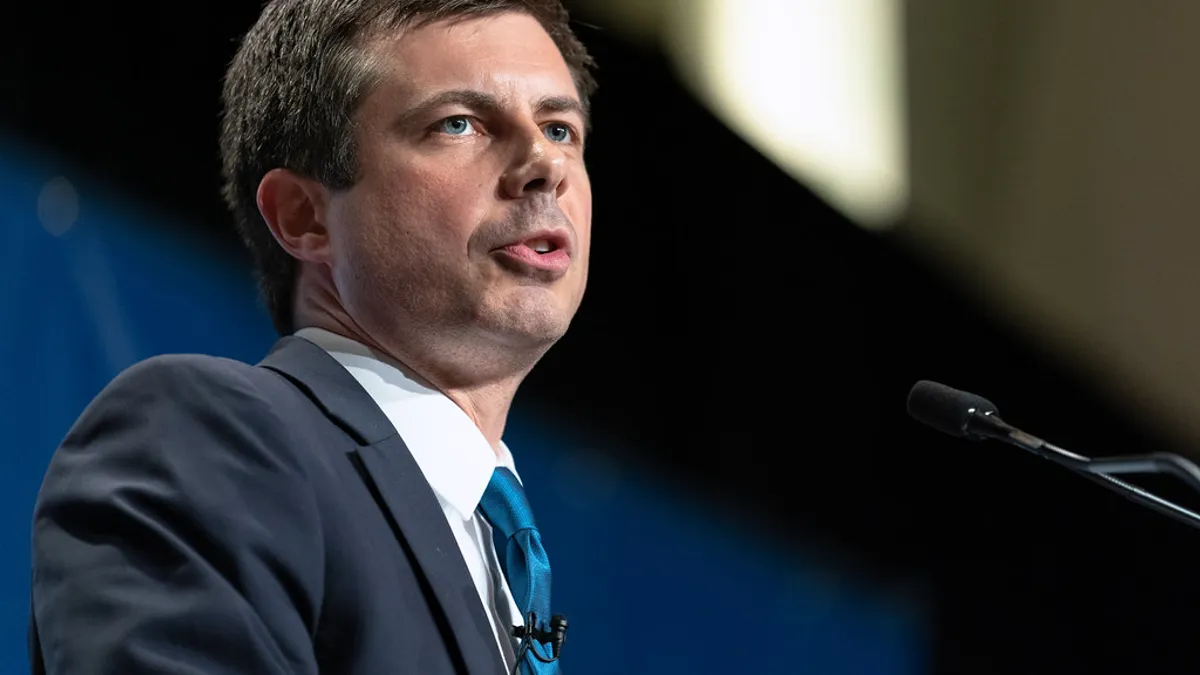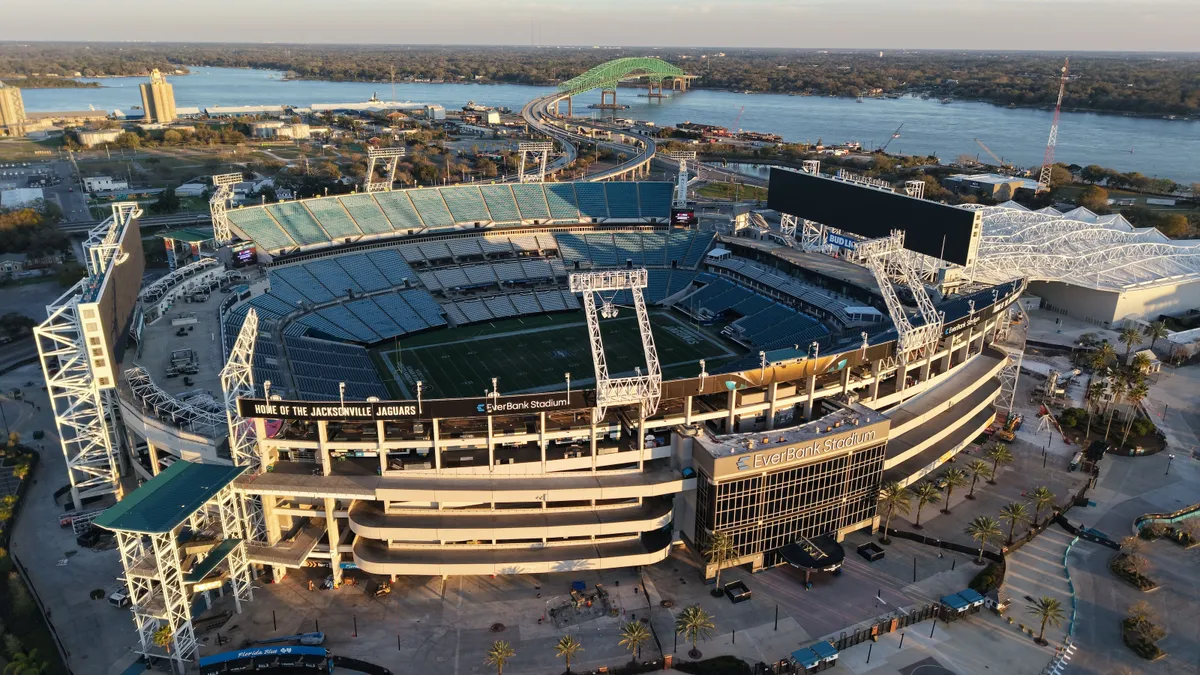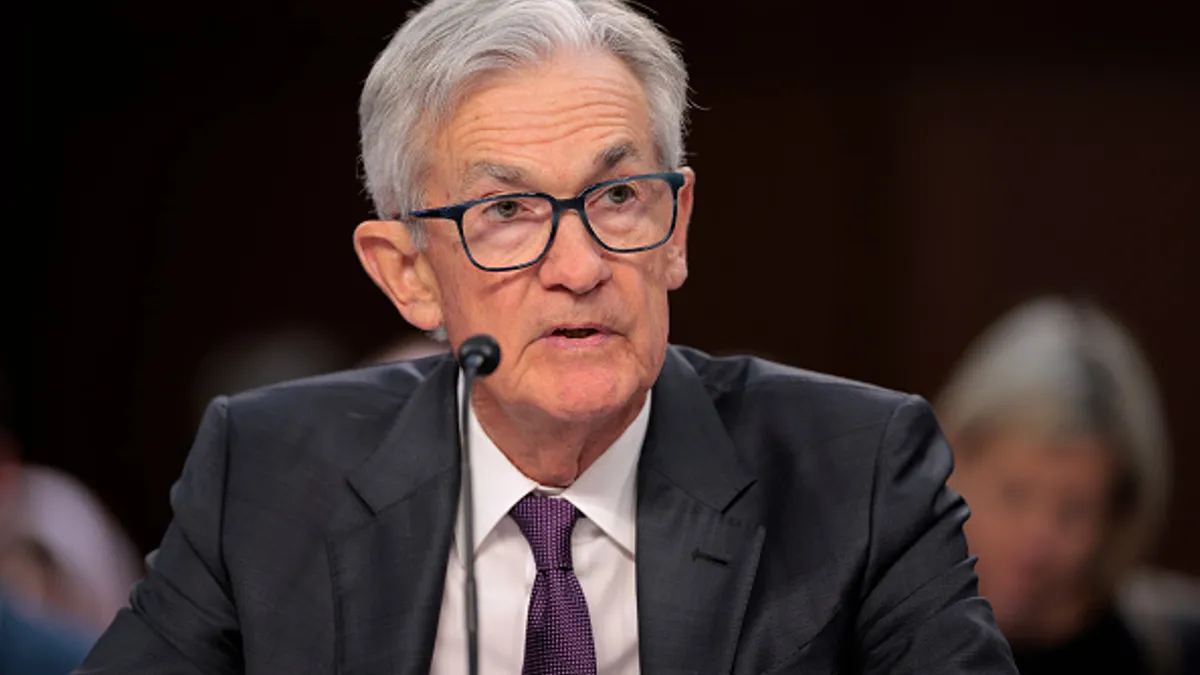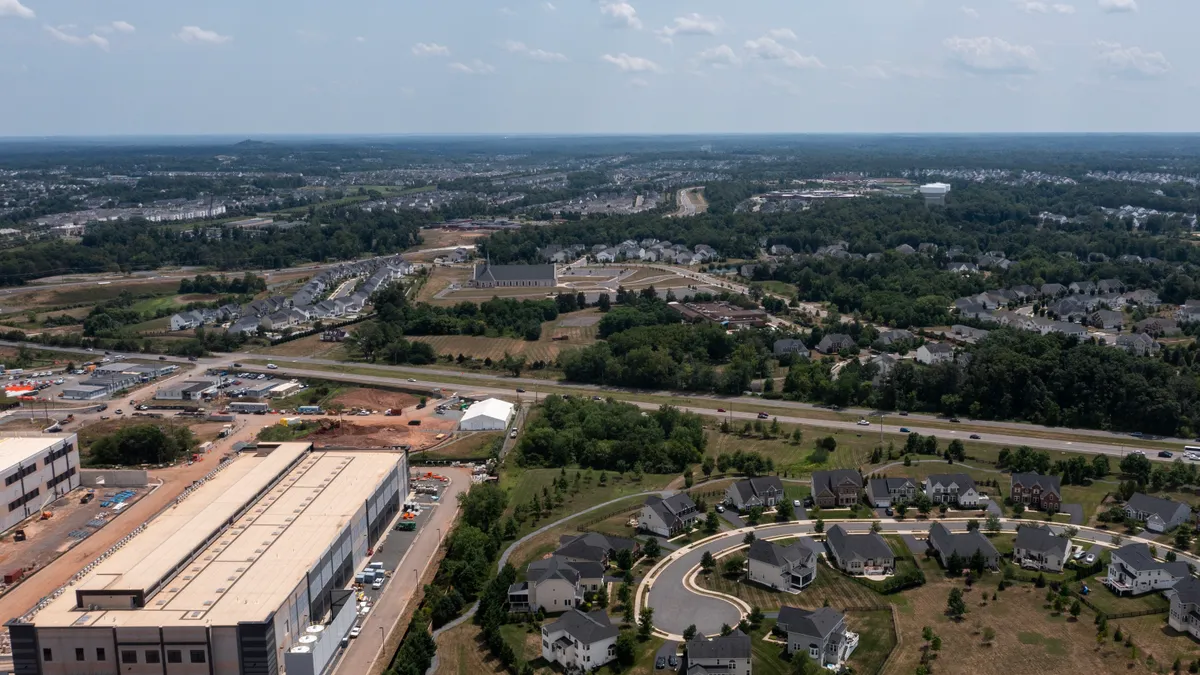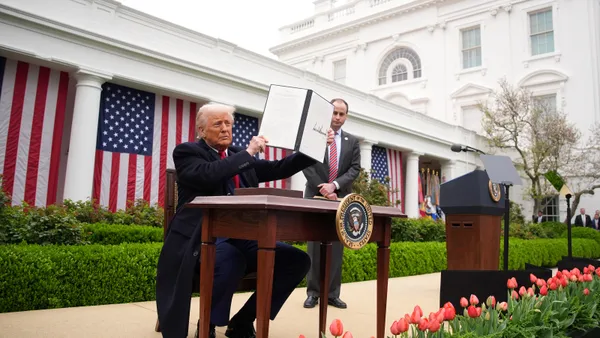While offering few new details of the Biden administration’s forthcoming Build Back Better plan, U.S. Secretary of Transportation Pete Buttigieg told a virtual conference of engineers that now is the time to act on a generational opportunity to fix America’s crumbling infrastructure.
During a presentation of the American Society of Civil Engineers’ infrastructure report card, which gave the U.S. an overall C- for the condition of its roads, bridges, ports, drinking water systems and electricity grids and identified a $2.59 trillion spending gap, Buttigieg said it was time to get to work rebuilding the country.
“We’ve got a long way to go, and our infrastructure is in tough shape,” Buttigieg said. “We are past the point of allowing ‘Infrastructure Week’ to be a Washington punchline once again.”
That was a reference to former President Donald Trump’s multiple attempts to rally policymakers to pass meaningful, bipartisan infrastructure legislation. But like President Barack Obama before him, Trump’s efforts resulted in scant tangible results.
Asked during the conference if he believed the Biden administration had the political will necessary to change that, Buttigieg answered affirmatively.
“I think we do, or at least I think we can,” Buttigieg said. “Look, the American people already want us to do this. And I think infrastructure is already one of the most bipartisan things that this administration is taking on.”
Rescue, then recovery
Echoing President Joe Biden’s sentiment that infrastructure isn’t a “red versus blue state issue,” Buttigieg made the case that now was “maybe a once-in-a-lifetime moment to invest.”
“Interest rates are at historic lows. Underemployment and unemployment are higher than they should be,” Buttigieg said. “There's never been a better reason for politicians, regardless of party, regardless of ideology, to want to get this done.”
Buttigieg called on his own experience as former mayor of South Bend, Indiana, to put ASCE’s findings, which identified 50,000 bridges across the nation as “structurally deficient,” in context.
“This is the time of year when a lot of people think about daylight coming back and springtime temperatures. There are others among us who just think of this as maximum pothole season,” he said, explaining that as South Bend’s mayor, he heard about potholes everywhere he went. “And I think the pothole has become a symbol of the bigger needs that we have.”
Asked for specifics, Buttigieg pointed to Biden’s call for 500,000 electric vehicle charging stations around the country, increased public transportation options and even “micro mobility,” like electric bikes and scooters within cities.
While more details weren’t forthcoming, Buttigieg did put in context the lack of a clearer expression of the administration’s infrastructure plan thus far, which was originally slated to be presented to a joint session of Congress in February, but was later pushed back as the administration focused on a COVID-19 relief package first.
“These big infrastructure opportunities are ahead, but we have something even more immediate before us at this moment,” Buttigieg said, explaining that the administration is “very focused right now on the first step of this ambitious two-step plan, which is rescue, followed by recovery. Right now, we're still in the rescue phase. We've got to get shots in arms.”
Nothing to brag about
Buttigieg’s comments closed ASCE’s full-day conference where the organization announced, for the first time in 20 years, that the nation’s infrastructure had received an overall grade higher than a D, but just barely. ASCE’s C- grade for the country overall highlighted the $2.59 trillion funding gap in America’s infrastructure spending, a figure that has grown by a rate of $259 billion per year over the last decade.
Cumulative infrastructure needs, in billions
| Infrastructure System | Total Needs | Funded | Funding Gap |
|---|---|---|---|
| Surface Transportation | $2,834 | $1,619 | $1,215 |
| Drinking, Waste and Stormwater | $1,045 | $611 | $434 |
| Electricity | $637 | $440 | $197 |
| Airports | $237 | $126 |
$111 |
| Inland waterways and ports | $42 | $17 | $25 |
| Dams | $93.6 | $12.5 | $81 |
| Hazardous and Solid Waste | $21 | $14.4 | $7 |
| Levees | $80 | $10.1 | $70 |
| Parks | $77.5 | $9.5 | $68 |
| Schools | $870 | $490 | $380 |
| Totals | $5,937 | $3,350 | $2,588 |
Source: American Society of Civil Engineers
While the C- rating showed at least a slight improvement from the organization’s last quadrennial report in 2017, when it was a D+, ASCE’s executive director Thomas Smith said it still wasn’t anything to brag about.
“This not a report card anyone would be proud to take home. We have not made significant enough investments to maintain infrastructure that in some cases was built more than 50 years ago,” Smith said in a statement that accompanied the report. “As this study shows, we risk significant economic losses and higher costs to consumers, businesses and manufacturers – and our quality of life – if we don’t act urgently.”
Looking to the future
The event, which follows on the heels of each presidential inauguration, has always been marked as a rallying cry from infrastructure stakeholders to call on members of Congress to act on the country’s infrastructure needs. This year's virtual conference was a who’s who of U.S. government officials, infrastructure stakeholders and industrial titans.
Much of the agenda was focused on passing an infrastructure bill in this administration, where previous administrations have failed.
“If we can't find consensus on infrastructure across the aisle, then I'm not sure we can find bipartisan agreement on anything,” said Maryland Gov. Larry Hogan, who detailed a 90-minute meeting he had with Biden and Vice President Kamala Harris at the White House last month. “I talked about how I really believe that infrastructure was an issue that we should and could find bipartisan consensus on, because this is something that both Democrats and Republicans say should be a top priority and something that both business and labor leaders say should be a top priority."
Leon Topalian, CEO of Nucor, the nation’s largest steel company, pointed to the nation’s 50,000 crumbling bridges as an example of something private business would never allow to happen among its own assets.
“For me and every executive in our company, it would be unacceptable to live with something that we knew might injure someone,” Topalian said. “So as I think about where we stand on infrastructure and those 50,000 bridges, if our elected officials are waiting for one of those to fail, waiting for a waterway to collapse, waiting for injuries to occur or God forbid, fatalities to occur because a bridge failed, the strategy is flawed. Our time to act is now.”
House Majority Whip Rep. Jim Clyburn (D-SC), who has focused on expanding infrastructure investment in his district as well as South Carolina’s ports, said he hoped the Biden plan would have an expansive view of infrastructure, including funding to expand internet connectivity in rural areas.
“I remember when we first came up with the internet, we called it the information highway,” Clyburn said. “The information highway has to be treated the same way that we treat the interstate because broadband is going to be the key to the 21st century in rural America, just as electricity was the key to rural America in the 20th century.”



